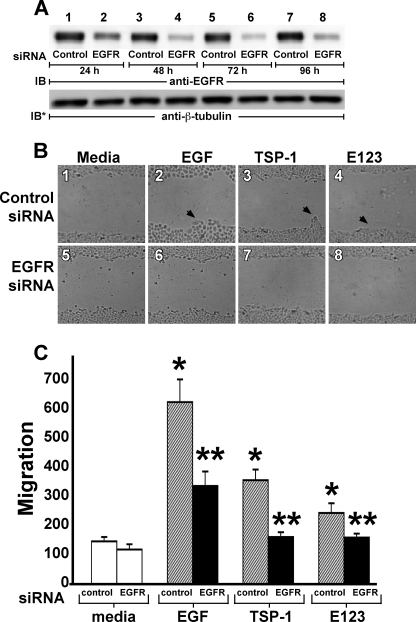FIGURE 7.
EGFR knockdown blocks TSP1-induced cell migration. A, A431 cells were transfected with control or EGFR-targeting siRNAs and after 24, 48, 72, and 96 h were lysed, and the lysates were processed for EGFR immunoblotting (lanes 1-8). To indicate protein loading and transfer, blots were stripped and reprobed for β-tubulin. IB, immunoblot; IB*, immunoblot after stripping. This blot is representative of two independent experiments. B and C, after transfection with either control or EGFR-targeting siRNAs, A431 cells were cultured to confluence in the wells of 24-well plates, after which they were wounded with a pipette tip, washed to remove cellular debris, and incubated for 48 h with EGF (10 ng/ml or 1.67 nm), TSP1 (30 μg/ml or 214 nm), E123 (3.8 μg/ml or 214 nm), or media alone (n = 6). At 48 h, cellular migration into the wound was photographed in triplicate and quantified. B, representative photographs of wounded monolayers after 48 h of incubation with EGF, TSP1, E123, or media alone. Arrows in panels 2-4 indicate increased cell migration into the wound. Magnification, × 40. C, vertical bars represent mean (±S.E.) migration into the wound at 48 h after incubation with EGF, TSP1, E123, or media alone. *, significantly increased compared with the control siRNA-transfected media control at p < 0.05. **, significantly decreased compared with the control siRNA-transfected cells with stimulus at p < 0.05.

